The Swedish Baptists of Oakland
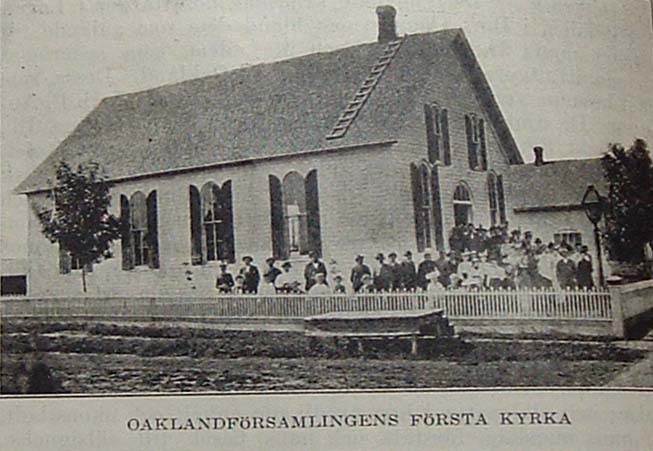
The Baptist Church of Oakland first looked like this
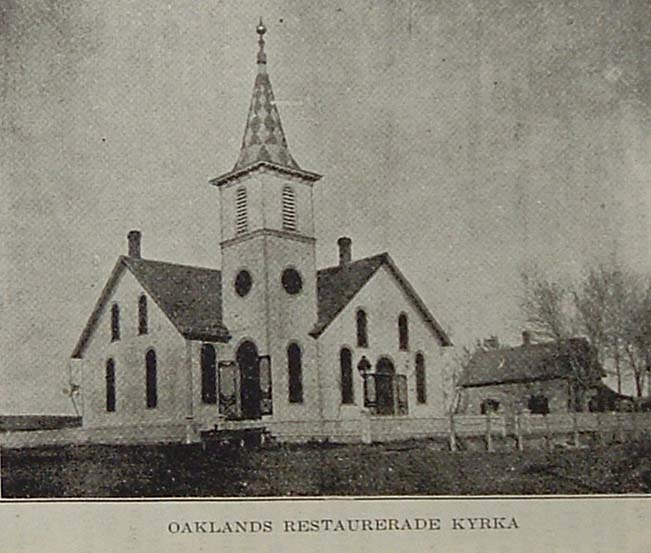
It was then remodeled as seen here
The historian reports that there was "severe testing and sifting" in these early years, a fact he attributes to pastors who emphasized "doctrinal subject(s) of a speculative nature." In 1883 A.P. Ekman was brought in from Stromsburg to help settle issues. It was Ekman who in Stromsburg had experienced "testing and sifting" of his own for his lapse into Waldenströmianism.
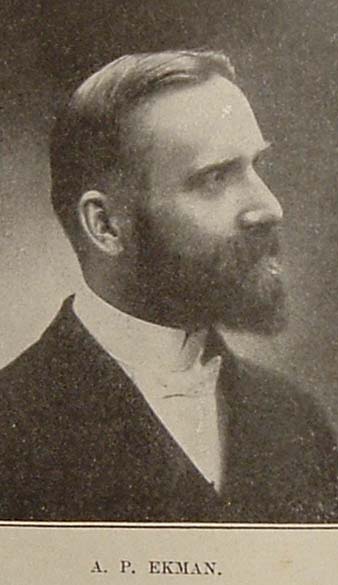

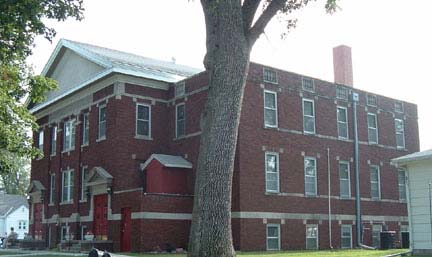
Oakland First Baptist today
In the background can be seen spectators awaiting the Burt County Fair grand parade, going on the day of our visit. Embarrassingly, we soon found ourselves going down the parade route lined on either side with eager viewers. How could they know they were seeing the Burt County Swedish Historical Expedition? We had no banner.
Pastor Lauritz Johanson served Oakland from 1883 to 1903, having come from Altona, Ill., and later served Sioux City and Omaha. C.V. Wesen, Robert Larson and E.S. Lindblad were Baptist pastors who came from the Oakland congregation.
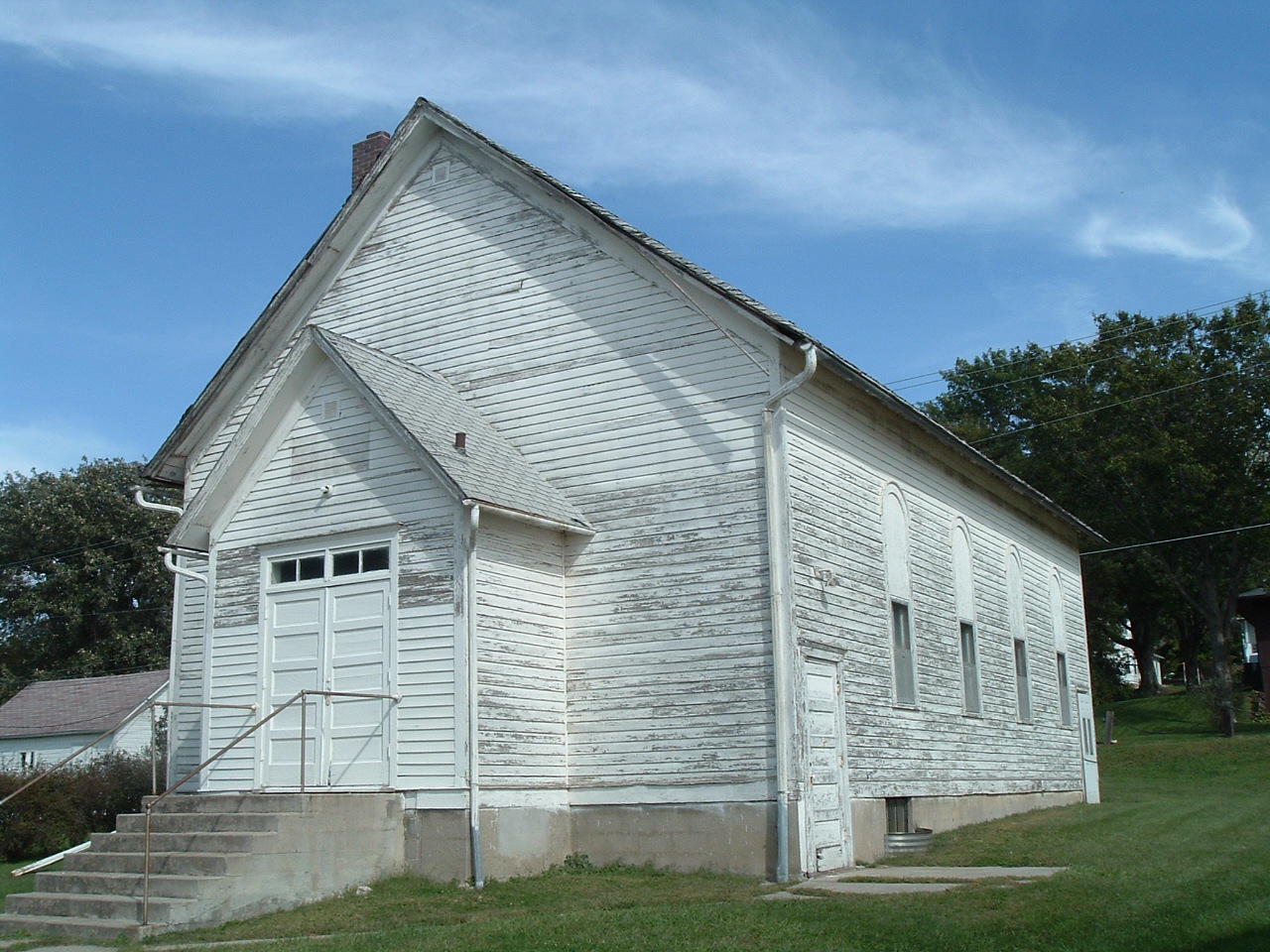
The Free Mission was the third owner of
the "nomad church"
The Swedish Free Church historian reports that in late 1894, one Mons N. Nelson of Oakland invited the well-known John G. Princell to hold meetings in an "unused" church. To review Princell's story, he was deposed from the Augustana synod for holding to the Mission Friend principle of regenerate membership and later criticized by that body for championing the views of Waldenström among the Swedes in America. By 1894 he was fully into his anti-denominational stance and might have welcomed the chance to come in to the back yard of Mission Covenant stalwarts like John Peterson and Andrew Hallner to promote his views. We might speculate whether some of his eager listeners were among the recently deposed Waldenströmian Baptists noted above.
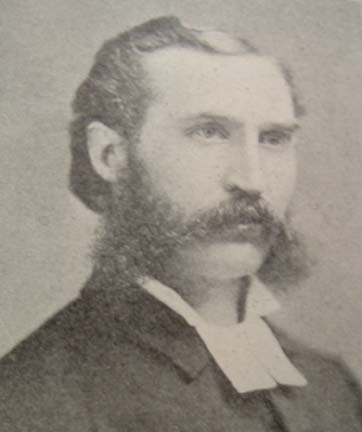
Free Mission founder J.G. Princell
(our great uncle Hugo Rodine attended his school)
Subsequently the group, now renting the unused facility, was visited by evangelists Anna Näsburg and Mary Weider, examples of the Free church's "prophesying daughters" written of by Fredrik Franson. In 1895 the Swedish Free Church of Oakland was organized and purchased the building which it occupied until building its own new church in 1915.
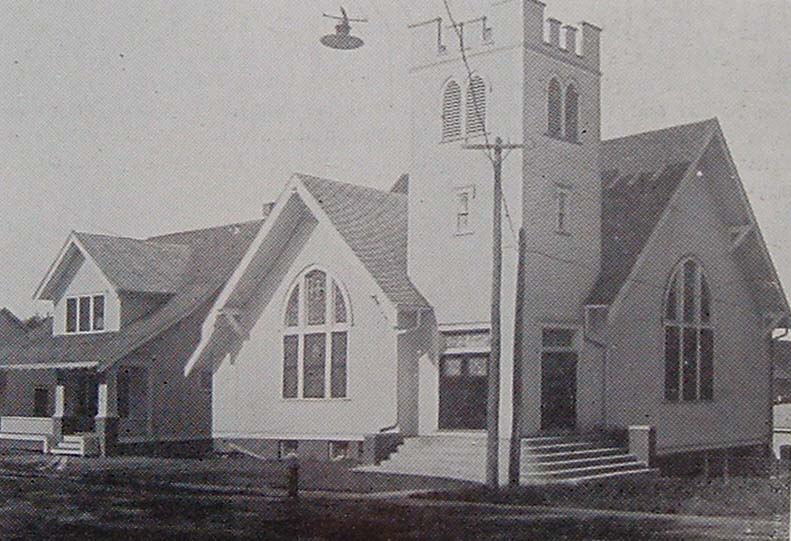
The Oakland Swedish Free Church
One of its subsequent pastors was Cornelius Andrewson, who also served the Polk congregation among others. He was one of the few "crossover" pastors...he also served the Wausa and Ceresco Covenant Churches. We are now up to four Mission Friend congregations in and near Oakland; five if we count the Baptist Waldenströmians!

Rev. C. Andrewson who served both Mission Covenant
and Free Mission congregations
The Free Mission congregation, now known as the Evangelical Free Church, has their modern edifice on the southeast part of Oakland.
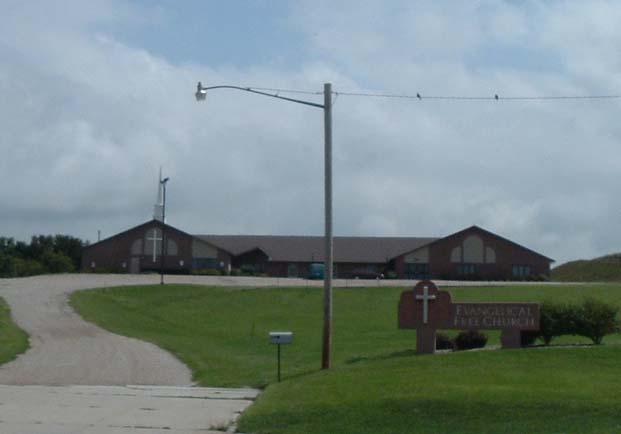
Oakland Free Church today; they might feel "the last shall be first"
We now leave Oakland for the outlying areas. First to the north was the community of Lyons, where Swedes began a church in 1900. Pastors from Oakland and Wakefield aided the congregation, which according to O.M. Nelson's booklet was at first meant to serve Swedes of all persuasions. By 1905, however, it was organized as a Mission Covenant congregation. At the time of the silver anniversary Nebraska Missionförening book, its membership was only an unlucky thirteen.
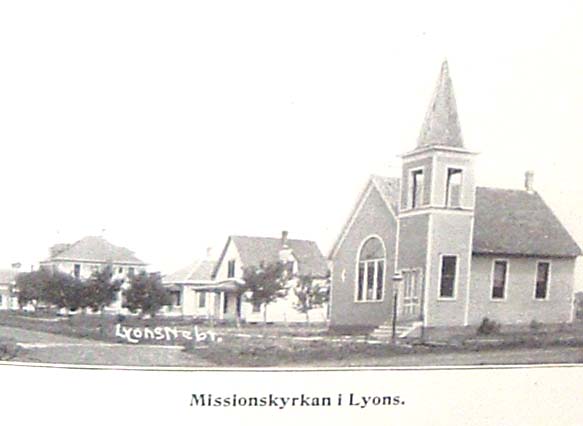 -
-
Lyons Mission Church, then and now
We now move southward from Oakland to an obscure Swedish neighborhood at the nexus of three counties. Sandahl reports that it was known by various names: Scandia, Logan, Swaburg and Argo. Elim was the name of the Augustana church there. As mentioned, this community had a connection with Wausa. The Genweb site on the internet revealed one such family connected to my own: the Louis (Lars) Molines. They were from this community on the south border of Burt County. Argo was a congregation of Mission Friends in this area and the Argo post office appears on the 1884 map. It is also known as Swaburg, and the Moline forbearers lie in the Swaberg Baptist cemetary, also known as the Uehling Baptist cemetery. Uehling is a town of less than 300 people across the county line in Dodge County. Uehling is the only remaining site which appears on present-day maps and is on state highway 77. Argo was a mysterious and obscure name which has very nearly disappeared. It is mentioned in early Covenant records in connection with Oakland. My first clue to its location was the 1884 map and the Genweb links to cemeteries in the area.
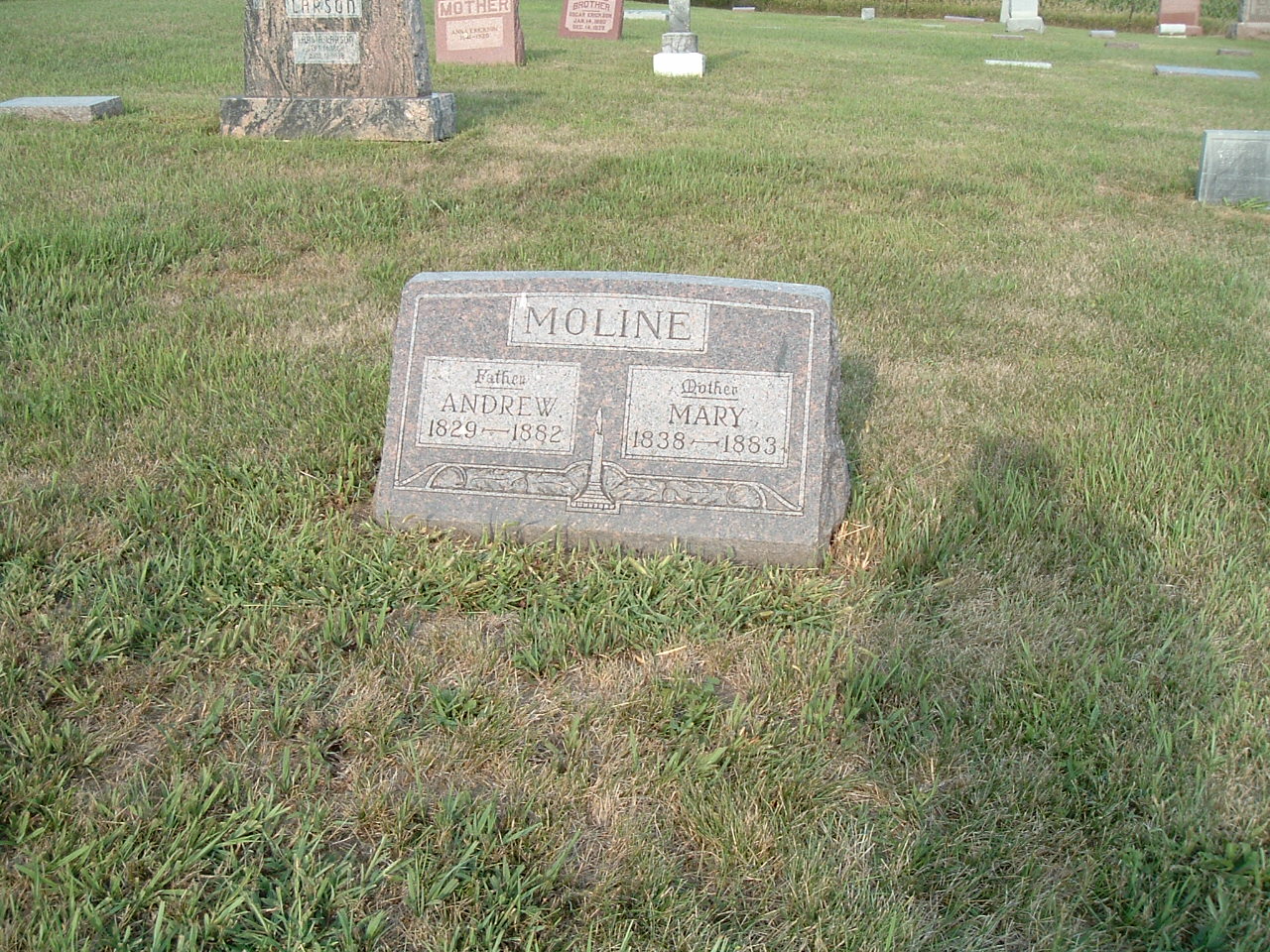
Andrew and Mary Moline gravesite at Swaburg Baptist cemetery: their descendants settled at Wausa
Of the Swaburg Baptists we know very little. It is known that Peter Saispar was a prominent member of the community as early as 1864 and the leader of the Baptist congregation. A school house known as "Saispar School" may have served as its place of founding. Baptist historian Osbeck reports that the congregation survived only five years at Argo. Sandahl reports in 1931 that both Baptists and Mission Friends had left the area by that time.

This cemetery is all that remains of the Baptist work at Swaburg/Argo
* * *
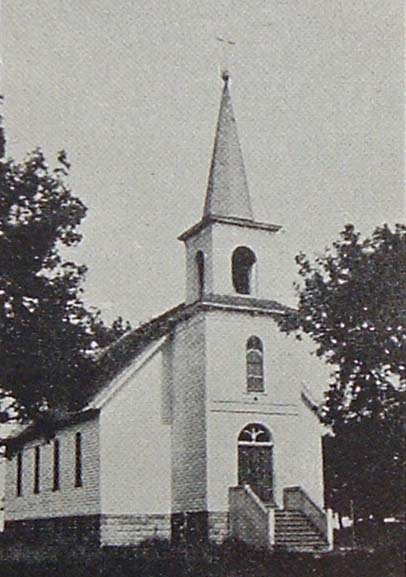
Elim at Swaburg: a "free" Lutheran idea
At the same time that S.G. Larson was visiting the Swedes of Oakland, he was ministering to a group which would form the nucleus of the Elim congregation at Swaburg. In fact, the early pastors at Oakland were based at Swaburg which had a parsonage. An interesting fact about this congregation is that it was initially founded as a "free" Lutheran group without ties to Augustana or any synod. We can only speculate whether the influence of the Swedish press in the form of Martinson and Princell's "Chicago Bladet" or Hallner's "MissionsWännen" figured in this. The coming of such Augustana loyalists as J. Torell soon persuaded Elim to join the fold and this church stands today in its original splendor.
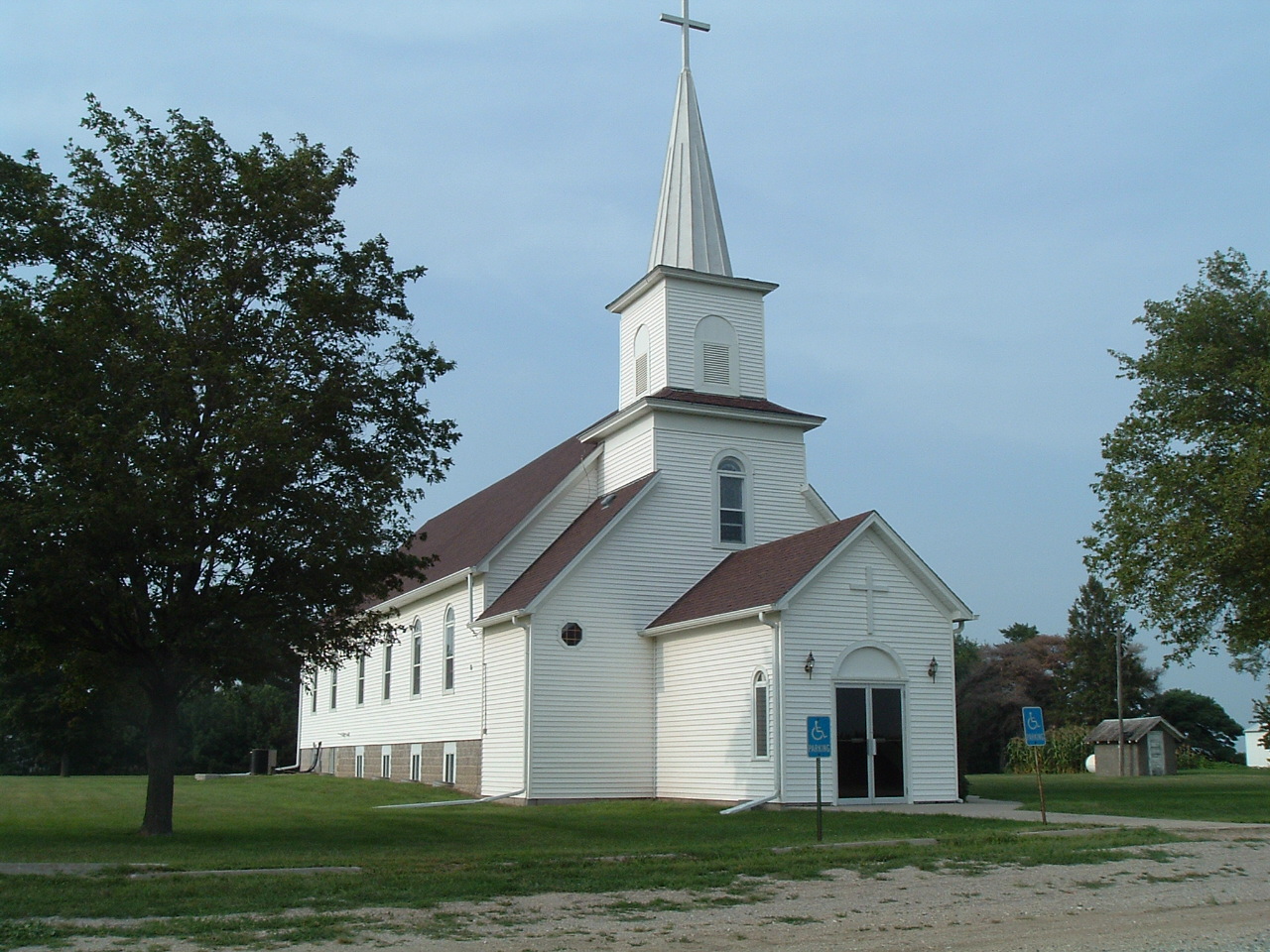
The Swaburg/Argo survivor: Elim Lutheran Church
* * *
The Argo Mission Church
There was also another impetus drawing me particularly to this obscure community of the Argo congregation. In the section, "A Visit to Covenant Archives", we had come across a death notice in an 1884 issue of Chicago Bladet from the Anderson family of Argo, Nebraska. Bordered in heavy black lines, the notice mentioned the three children of N. Anderson who had died. Infant mortality and childhood diseases ravaged the first generation of immigrants. This notice was particularly touching to me. It seemed to reveal at the same time the despair of grieving parents who lose children, made more intense by their circumstances of being newcomers on a strange and arduous frontier, and a poignant reaching-out by posting this notice for any and all fellow countrymen and fellow believers who subscribed to the Swedish press. I wanted to see if by some chance I could at this distant time respond to their plea; to visit the gravesite of their dear children and observe a moment of shared grief and hope with these pioneers. I was not to be disappointed.

The Andersons of Argo
It would have been at this time that yet another tragedy struck the Andersons in the deaths of their two young daughters and an infant son, as reported in the notice to Chicago Bladet. Behind the parents' more recent tombstone we found what we had been looking for. This is the monument erected in the grief of 1884 by the Andersons:
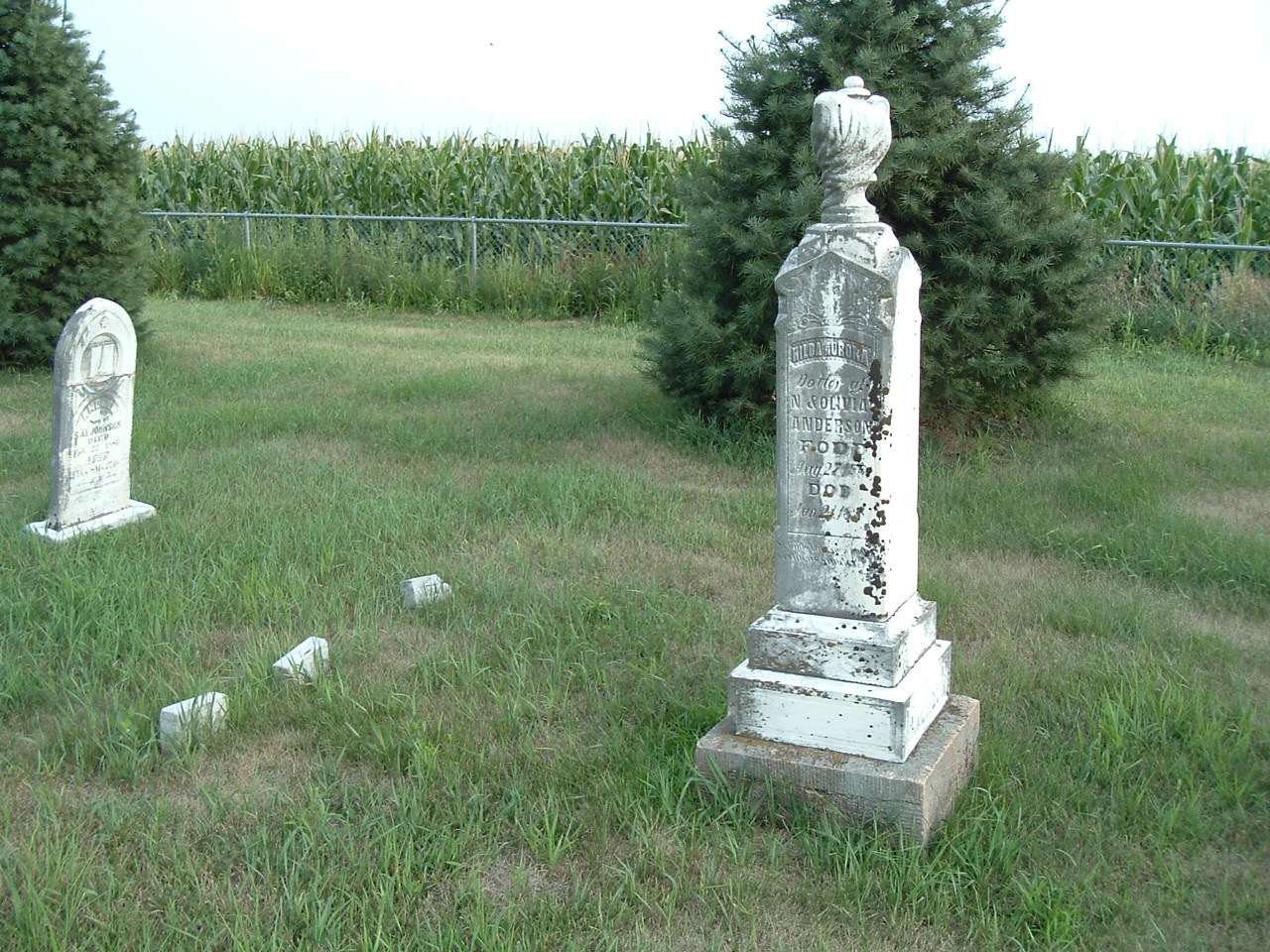
This side is for Hulda
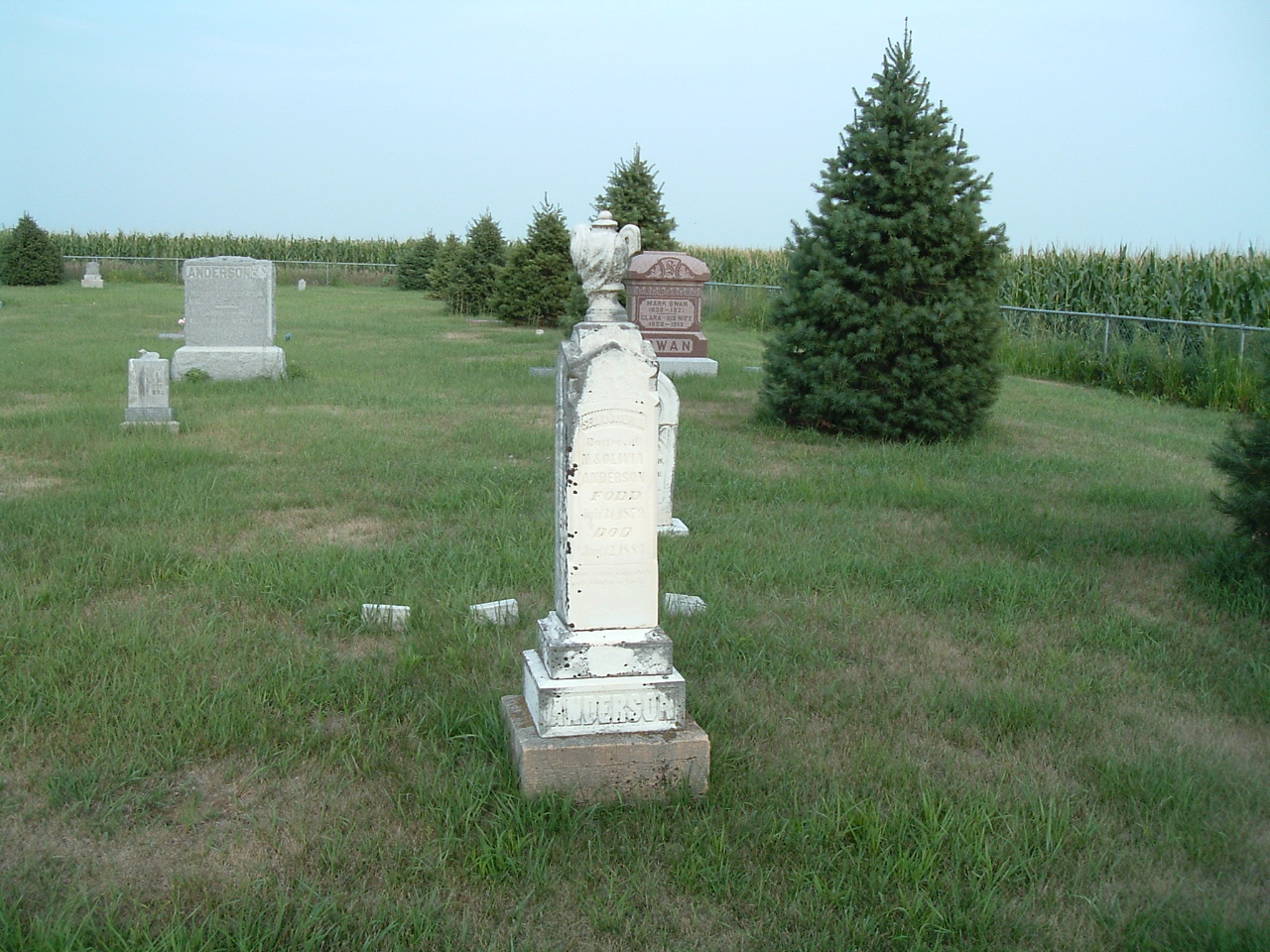
This side is for Selma

This side is for their infant son
Nels Anderson reportedly returned to Argo to carry on Sunday School work with members of the community after they had moved into town and the church had been occupied by an "American" group. The Uehling Congregational church traces its history to this site.
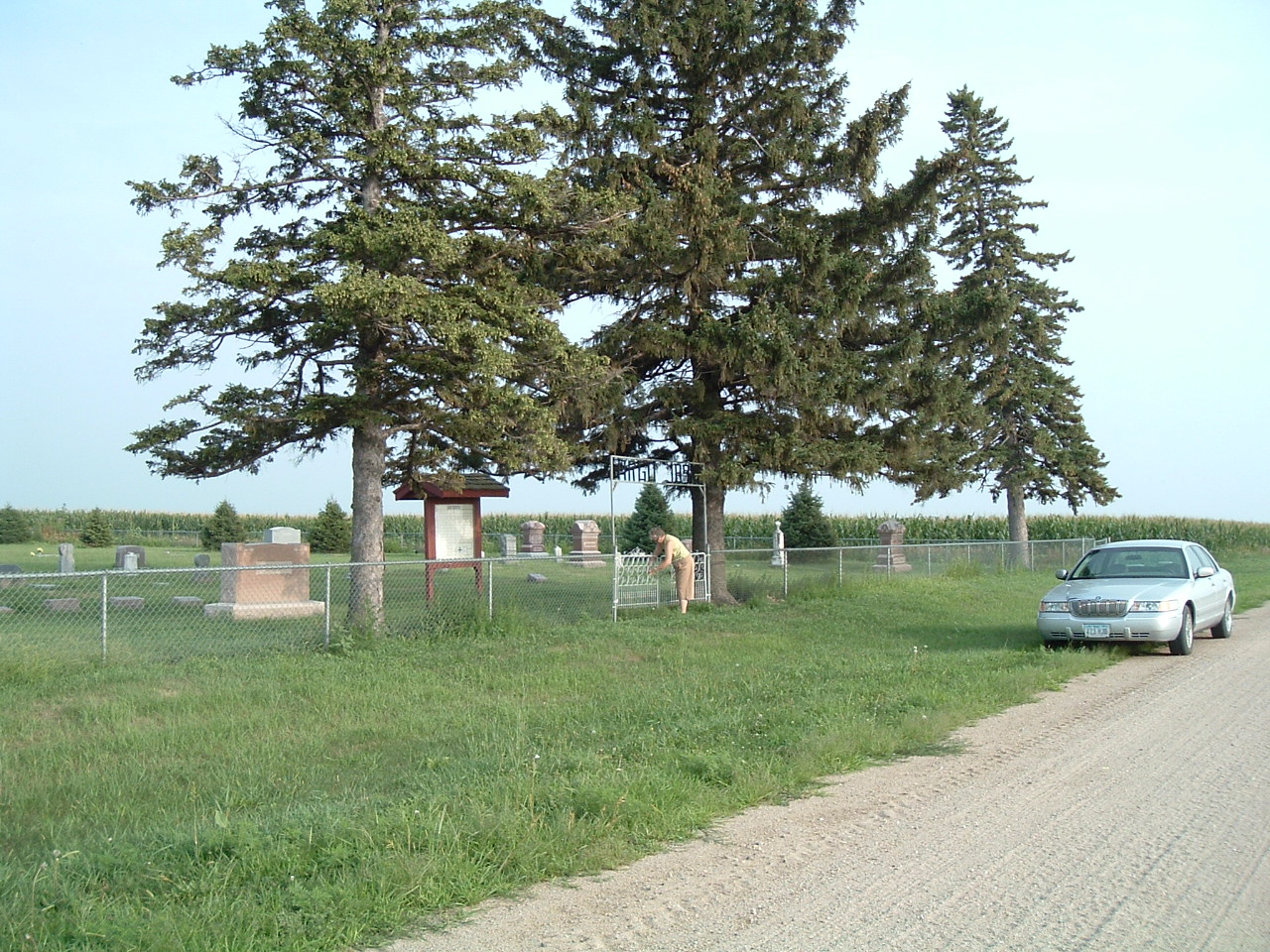
Eleanor, a good Swedish farm girl, remembers to close the gate
This is all that remains of Argo...memories, but powerful ones
* * *
